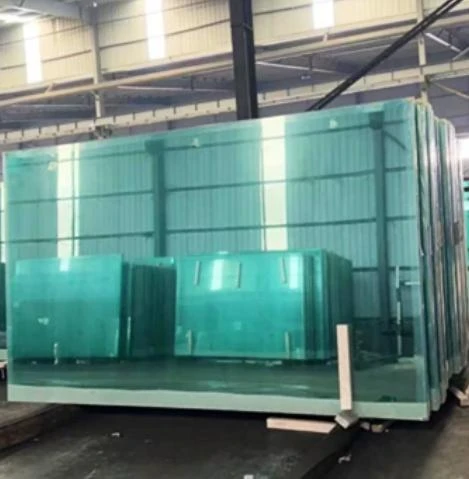Glass Structure Design An Innovative Approach to Architecture
In recent years, glass has emerged as a popular material in architectural design, celebrated for its aesthetic qualities and ability to create dynamic spaces. Glass structures, from commercial buildings to residential homes, have transformed our urban landscapes and challenged conventional architectural norms. This article explores the principles of glass structure design and its impact on modern architecture.
One of the key advantages of using glass in construction is its transparency, which allows natural light to flood interiors, reducing the need for artificial lighting during the day. This not only enhances the ambiance but also contributes to energy efficiency. Large glass facades have become a hallmark of contemporary architecture, providing unobstructed views of the surrounding environment and creating a seamless connection between indoor and outdoor spaces.
When designing with glass, structural integrity is paramount. Engineers and architects must consider various factors, including the weight of the glass, thermal expansion, and wind loads. Advanced technologies, such as computer simulations and material testing, play a crucial role in ensuring that glass structures can withstand environmental stresses. Innovations like laminated glass and tempered glass have improved safety, making large glass panels more resilient to breakage and impact.
glass structure design
Moreover, glass structures offer unparalleled design flexibility. The ability to create curved and intricate shapes expands the horizons of architectural creativity. Iconic buildings such as the Apple Park in Cupertino and the Louvre Pyramid in Paris showcase the versatility of glass, embodying fluidity and modern aesthetics. Designers often utilize different types of glass, such as frosted, tinted, or reflective, to achieve specific visual effects and enhance privacy without sacrificing natural light.
Sustainability is another significant consideration in glass structure design. The demand for eco-friendly buildings has prompted architects to explore ways to minimize energy consumption. Innovations like double-glazing, which consists of two panes of glass with a gas-filled space in between, enhance thermal insulation, reducing heating and cooling costs. Furthermore, the use of low-emissivity (low-E) glass helps regulate indoor temperatures by reflecting heat back into the building during winter and keeping it out during summer.
As we look to the future, the trend of incorporating glass into architectural designs is expected to grow. The integration of smart glass technology, which can change its opacity in response to environmental conditions, offers exciting prospects for creating adaptive and energy-efficient spaces.
In conclusion, glass structure design represents a harmonious blend of aesthetics, functionality, and sustainability. It challenges architects to rethink traditional concepts while providing innovative solutions to contemporary architectural dilemmas. As technology continues to evolve, the possibilities for glass in architecture are limitless, promising to shape the skylines of our cities for generations to come.
 Afrikaans
Afrikaans  Albanian
Albanian  Amharic
Amharic  Arabic
Arabic  Armenian
Armenian  Azerbaijani
Azerbaijani  Basque
Basque  Belarusian
Belarusian  Bengali
Bengali  Bosnian
Bosnian  Bulgarian
Bulgarian  Catalan
Catalan  Cebuano
Cebuano  Corsican
Corsican  Croatian
Croatian  Czech
Czech  Danish
Danish  Dutch
Dutch  English
English  Esperanto
Esperanto  Estonian
Estonian  Finnish
Finnish  French
French  Frisian
Frisian  Galician
Galician  Georgian
Georgian  German
German  Greek
Greek  Gujarati
Gujarati  Haitian Creole
Haitian Creole  hausa
hausa  hawaiian
hawaiian  Hebrew
Hebrew  Hindi
Hindi  Miao
Miao  Hungarian
Hungarian  Icelandic
Icelandic  igbo
igbo  Indonesian
Indonesian  irish
irish  Italian
Italian  Japanese
Japanese  Javanese
Javanese  Kannada
Kannada  kazakh
kazakh  Khmer
Khmer  Rwandese
Rwandese  Korean
Korean  Kurdish
Kurdish  Kyrgyz
Kyrgyz  Lao
Lao  Latin
Latin  Latvian
Latvian  Lithuanian
Lithuanian  Luxembourgish
Luxembourgish  Macedonian
Macedonian  Malgashi
Malgashi  Malay
Malay  Malayalam
Malayalam  Maltese
Maltese  Maori
Maori  Marathi
Marathi  Mongolian
Mongolian  Myanmar
Myanmar  Nepali
Nepali  Norwegian
Norwegian  Norwegian
Norwegian  Occitan
Occitan  Pashto
Pashto  Persian
Persian  Polish
Polish  Portuguese
Portuguese  Punjabi
Punjabi  Romanian
Romanian  Russian
Russian  Samoan
Samoan  Scottish Gaelic
Scottish Gaelic  Serbian
Serbian  Sesotho
Sesotho  Shona
Shona  Sindhi
Sindhi  Sinhala
Sinhala  Slovak
Slovak  Slovenian
Slovenian  Somali
Somali  Spanish
Spanish  Sundanese
Sundanese  Swahili
Swahili  Swedish
Swedish  Tagalog
Tagalog  Tajik
Tajik  Tamil
Tamil  Tatar
Tatar  Telugu
Telugu  Thai
Thai  Turkish
Turkish  Turkmen
Turkmen  Ukrainian
Ukrainian  Urdu
Urdu  Uighur
Uighur  Uzbek
Uzbek  Vietnamese
Vietnamese  Welsh
Welsh  Bantu
Bantu  Yiddish
Yiddish  Yoruba
Yoruba  Zulu
Zulu 

